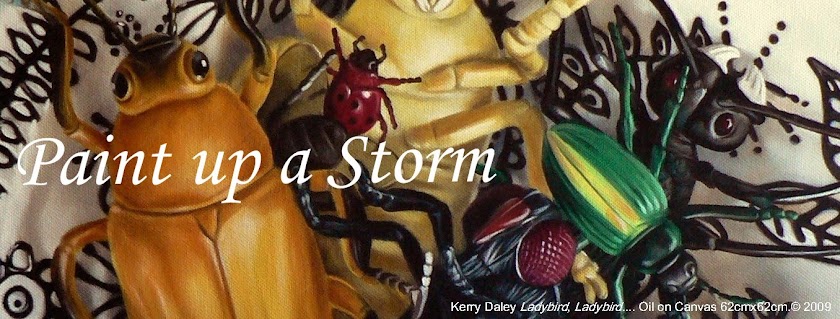Start an 'Picture Notebook'
What is a 'Picture Notebook'?
- This is the place where you stick in all the cuttings and clippings that delight your eyes. You may have pictures on your fridge, filing cabinet or notice board, when you take them down, stick them in this book and keep them!!!
- Gallery invites, postcards, magazines, newspapers all have pictures that appeal to our artistic sensibility. I think it's handy to have them all in one place.
- An 'Picture Notebook' is the place I turn to when my eyes are bored and need stimulation. When I am tired of the visual things in my everyday life, and I need some colour and excitement, I can go to my 'Picture Notebook' to be revived.
- When I am looking for inspiration and ideas, I go to my 'Picture Notebook'. It helps me find my creative sweet spot!
 |
| Pages from one of Kerry Daley's 'Picture Notebooks' |
 |
| Several of Kerry Daley's 'Picture Notebooks' with clippings ready to be stuck in. |
- Of course, you needn't keep your pictures neatly clipped out and stuck in a book - a folder, hanging file, or box would work just as well (and I think I have variations on all of those things).
- And then - it does not have to be pictures either...
 |
| More Stuff! (in my studio) |
- I like things too - especially stones and bones and shells, and then of course, plastic animals. I like to keep them in glass jars, like little specimens!
- Is there some way that you can start putting your visual stimuli all in one place (or two or three), somewhere you can access easily when you eyes are jaded and need a pick me up?
- Do you already have a system that you use that does the same thing for you? I would love to hear about it!
Quote of the Day
"The creation of something new is not accomplished by the intellect but by the play instinct acting from inner necessity. The creative mind plays with the objects it loves"










